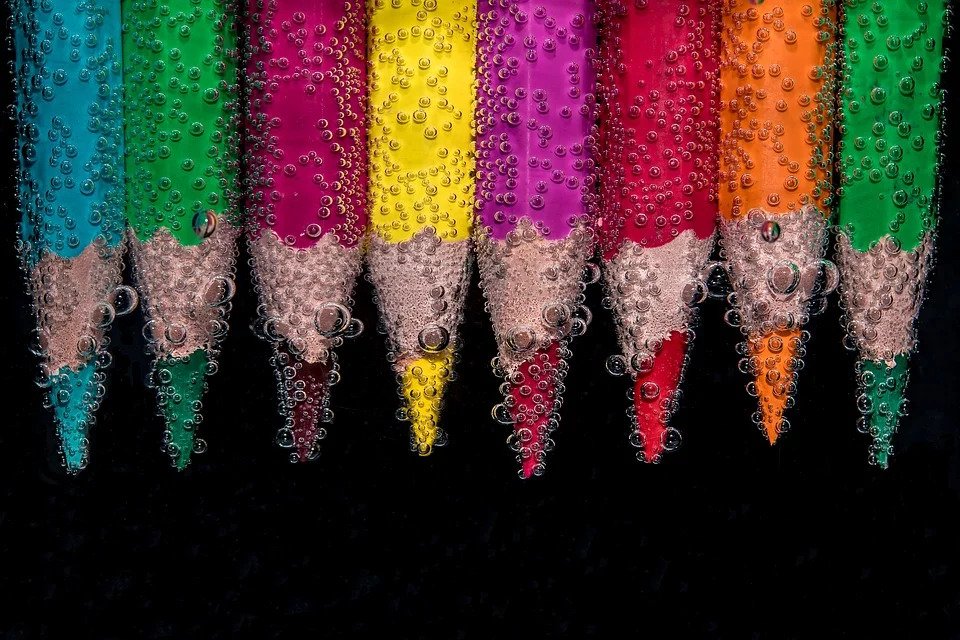Crack it With Colour: Why Red, Yellows, Blacks and Blues Can Make or Break Your Website
Have you ever stopped to think what makes an eye-catching photo so eye-catching? We’ve previously talked about the setting, subject and equipment required to take the perfect wildlife shot, but there’s more to it than that. In all aspects of life where aesthetics matter, colour is hugely important. If you can snap a picture that strikes a balance between light, dark, bright colours and shade, the photo will leap from the page. As in photography, graphic designers also consider colours very carefully when they put together their creations. As we’ve noted in the past, vivid colour palettes and gradients have become popular in recent years because they bring a “futuristic feeling” to designs.
Without spelling it out much further, colours matter. We all know that creating a website requires a combination of skills and technique. From SEO and security to social media integration, today’s websites have to be efficient, easy to use and accessible to the masses. However, within the design process, every designer needs to consider colour. If the website isn’t attractive or fit for purpose, visitors will lose interest and turn off. In fact, looking back through the ages, the psychology of colours has been a subject of study since the 19th century.
In 1810, Goethe penned The Theory of Colors, where he linked categories of colours, e.g. red-yellow, with emotional responses such as warmth. Building on this, Goldstein (1942) noted that colours produce “systematic physiological reactions” that manifest in emotional experiences, cognitive orientation and overt action. These early observations have developed into a canon of literature on the topic of colours and their influence on our brains and bodies.
Today, designers know the findings of these studies all too well and, whether consciously or subconsciously, use them to guide their designs. Let’s take a look at some case studies to further demonstrate this point.
The Coca-Cola Red Effect
Have you ever not been entertained by a Coca-Cola creation? From its famous cans to the company’s online output and, of course, its TV adverts, Coca-Cola knows how to attract attention. Although its marketing team uses many techniques to appeal to the masses, colour is hugely important. How many times have you seen a red background with white text and thought of Coca-Cola? As per the experts, red is associated with energy, passion, love and desire. When you link this with famous Coca-Cola marketing slogans over the years – such as “revives and sustains” – it’s easy to see why you’re probably already imagining its taste right now.
The T-Mobile Trademark Pink
In the corporate world, there’s perhaps no better indication that colours matter than T-Mobile. To protect the image it’s built up over the years, the company trademarked a specific shade of magenta. Known specifically as Pantone Rhodamine Red U, the colour features heavily on the T-Mobile logo and across its websites. While the legal nuances of trademarking a colour may be a matter of debate, the mobile provider has issued many cease and desist letters in the past, including to rival AT&T for using a shade of plum that was too close to magenta.
The Betway Casino Blackout
In an industry where power, wealth, style and formality matter, black is ideal. Online gaming operator Betway Casino has taken full advantage of these emotional responses on its website. Providing the background to hundreds of Betway Casino games on display, including slots, blackjack and French roulette, the site is shrouded in black. This colour choice not only plays into the James Bond dynamic (i.e. a suave, sophisticated player) it gives off an air of credibility. By offering a touch of seriousness among the quirky game logos, Betway is saying to customers that they can trust deals such as the 100% match bonus are credible and legitimate. What’s more, the black background is a canvas for these colourful screenshots and logos, helping the range of gaming options stand out from website copy and menus.
The Facebook Blue Yonder
Read through Adobe Spark’s guide to colour and it notes the importance of shades on our choices. Picking Facebook as an example, the article points to research that shows between 62% and 90% of consumers make decisions based on colours. We know that’s true simply based on the fact Facebook now has 2.45 billion active monthly users. Of course, it’s the famous blue that’s used consistently throughout the company’s website that, according to colour theory, inspires thoughts of uniqueness and authenticity.
The McDonald’s Golden Smile
IMAGE SOURCE: pixabay.com
It’s arguably the most iconic brand logo in the world, and its distinct red and yellow colour scheme extends to the McDonald’s website. According to ColorPsychology.org, yellow is associated with joy, happiness and energy. For a fast-food brand that plays on the idea of Happy Meals and leaving customers feeling full, satisfied and smiling, yellow is the ideal colour for the famous M. What’s more, when you look at the way the M features curves rather than sharp edges, it feeds into the notion that yellow is a warm colour that leaves us feeling at ease and comfortable.
In conclusion, colours matter. When you’re designing a website, make sure you think about the colours as well as every other page element. If you want to give off a warm, happy vibe, add yellow into the mix. For something more serious, try black. Once you strike the right balance of colours, you’ll find that your designs become a lot more entertaining, engaging and, importantly, memorable.





